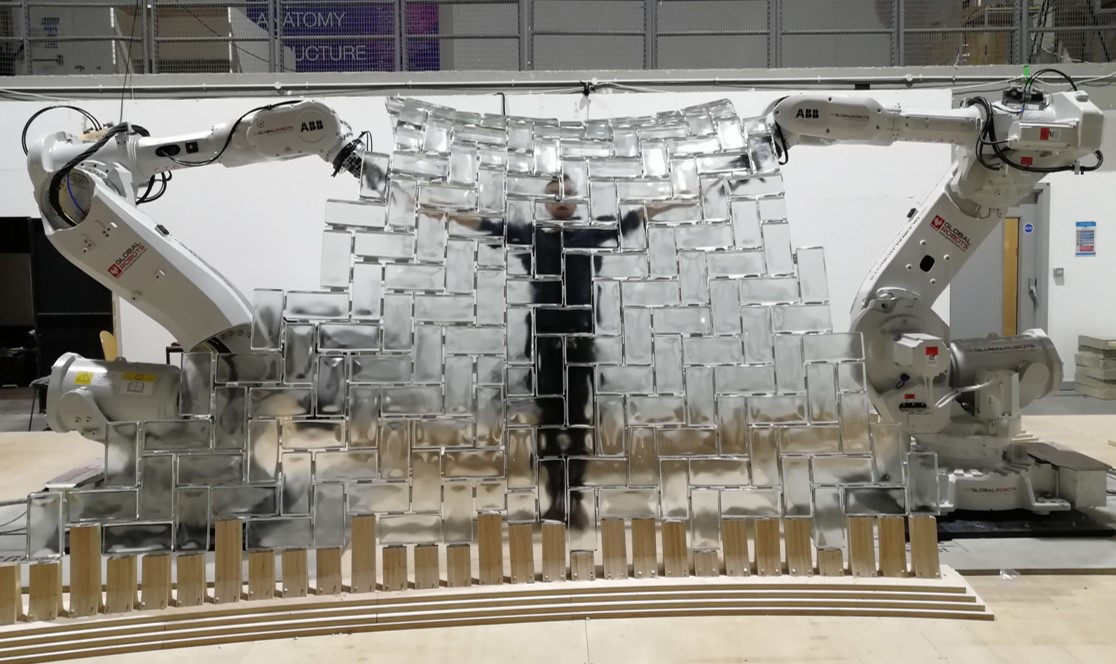CURRENT: Self-locking and gravity-actuated robotic construction practices
The productivity of the construction industry in the United States has drastically fallen over the past two decades. The revolutionary potential of self-locking and gravity-actuated principles for this industry comes to the fore when these principles are integrated with emerging innovations in geometry, mechanics and robotics. Because of gravity, large-span structures demand wasteful temporary support which adds to the economic and environmental cost of the construction. We explored the feasibility of gravity-actuated assemblies in composite bending active/rigid shell systems, reciprocal shell systems, and plate-bande systems.
In our latest work on plate-bande systems, we investigated the static equilibrium of a self-locking octagonal shell, constructed in a herringbone pattern and closed-loop sequencing, to gain insight into the local interactions between the more than 10,000 bricks. A discrete element analysis exposed the existence of plate-bande resistance within the herringbone pattern. Even during construction, these plate-bande resistance systems prevented the sliding and overturning of the shell. This research formed the basis for a research collaboration on the construction sequence engineering of the Light Vault, a self-locking glass brick shell (1.9m x 2.0m x 4.3m) constructed through human-robotic interaction and exhibited at the SOM (architectural engineering firm Skidmore Owings & Merrill) ‘Anatomy of Structure’ Exhibition (London, UK, 2020).
We are interested self-balancing mechanics of large-span structural systems combined with robotic construction constraints to overcome these challenges. It is hypothesized that by combining form finding techniques, artificial intelligence methods and robotic fabrication approaches, the shape and topology of a self-balancing system can be tailored to 1) enable beneficial structural action and 2) be constructed with robots without formwork and thus eliminate construction waste.
Designing and controlling the geometry and layout of large-scale structures ushers in new structural typologies defined by self-balancing functionalities and waste-free construction.
